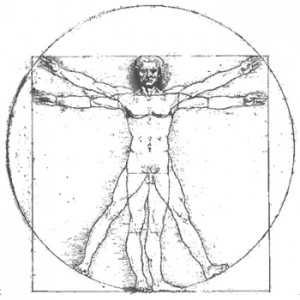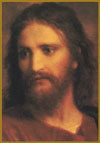Introducing The Urantia Book:
A Revelation of Love and Cosmic Evolution
By Byron Belitsos
See a longer version of this essay
as it first appeared in EnlightenNext.com
View Byron’s two-minute video
introduction to Urantia Revelation

 By all accounts, The Urantia Book, a 2,097-page tome that claims to be an epochal divine revelation to our planet, is a unique artifact in the history of religion. Some regard the Urantia Revelation as a postmodern Bible, and since its publication in 1955, the book has sold over a million copies in English in all versions (and more than 200,000 in Spanish), and has been translated into numerous languages.
By all accounts, The Urantia Book, a 2,097-page tome that claims to be an epochal divine revelation to our planet, is a unique artifact in the history of religion. Some regard the Urantia Revelation as a postmodern Bible, and since its publication in 1955, the book has sold over a million copies in English in all versions (and more than 200,000 in Spanish), and has been translated into numerous languages.
The Urantia text is a book-with-a-mission whose worldwide readership has grown almost entirely by word of mouth. Hundreds of study groups are now spread out across the world, and celebrities have come forward to support this controversial work, including Deepak Chopra and Marianne Williamson, and even Hollywood stars such as Jackie Gleason and writer-producer Norman Lear. Numerous musicians including Willie Nelson, Jimi Hendrix, and Jerry Garcia and are known to have been fervent students. While its “off-planet” pedigree will always be a subject of debate, hundreds of thousands regard The Urantia Book as revelatory, and now writers, teachers, healers, and visionaries throughout the world are beginning to create a global cultural phenomenon around this mysterious work.
The Urantia Revelation has been met with very little notice by the Christian religious establishment, even though it contains an eye-opening challenge to contemporary Christianity with its claim to contain (among many other elements) the authentic angelic record of the life and teachings of Jesus—a biography of such depth and beauty that its adherents claim its teachings and its biographical detail about Christ far exceed the New Testament in religious significance.
The Urantia Book’s unique teachings are very broad in scope, and they are framed within a striking evolutionary and integral cosmology. Some of the principal ideas in the book’s 2,097 pages of teachings include the following:
• that which is divine is personal: God is not simply the creative source of the energies and beings of the cosmos, but is also a self-aware divine person that loves and can be loved
• love and universal brotherhood are primal: God loves each of us just as a father or mother would; all humans on all inhabited planets are members of one universal family of God
• a prime cosmic directive rules the universe: an evolutionary imperative pervades the unfolding realms of space-time and directs its growth toward an ultimate goal
• each human personality is unique: there is no one quite like us in all eternity; personality is a divine and unfathomable gift and as such all persons are of infinite value
• an eternal life awaits us: once our personality and soul reassemble after death, we begin an infinite life of endless growth
• the divine indwells us: each of us has been gifted with a pure spark of God within our minds that guides us and cocreates our immortal soul based on our value choices
• our soul is evolving: our personality is changeless, but its endowment of free will permits us to grow our immortal soul by our decisions in each moment
• Earth’s history has been tumultuous: our planet (whose name is “Urantia”) was scarred by a far-distant angelic rebellion, but this wound is now being quickly healed by a cocreative divine intervention that especially began with the life of Jesus and is now reaching its culmination (see Appendix C)
As noted in Jerry Lane’s Afterword in The Adventure of Being Human, the Urantia Revelation’s extensive presentations about the nature and purpose of the human soul are especially significant, and this topic happens to be a favorite subject of Michael and Mother as presented in this book. The pair amplify on the core Urantia teaching that our personal soul is an evolutionary-experiential reality, one that grows in depth and breadth through our daily moral choices. The evolutionary import of each decision and each personal experience, at any moment of our waking life, is actually preserved as our soul by the divine action of our indwelling spirit; all meaningful experience that is based on choosing true values gets incorporated into this “personal container” called the soul as an eternal possession.
Our soul growth continues throughout our eternal life and ends in our perfection in the far-distant future—and this reality, this phenomenon of the collective evolution of trillions of evolving humans who are of origin on planets like ours—is the secret of what can be called the evolution of deity. This grand evolution is (in part) constituted by the accumulated evolutionary soul growth of all beings in all domains; and this reality, when combined with the physical and biological evolution of the universe itself, equals the what The Urantia Book calls “the God of Evolution.” And this “face” of God—one of many—is the time-space complement to the changeless, eternal, creator Deity, also known as God the Universal Father and Mother.
With all that said, let’s take an overview look at the anatomy of The Urantia Book, which contains 196 papers and is divided into four sections:
 “Part I. The Central and Superuniverses” presents the infinitely loving and merciful nature of the Universal Father, the Eternal Son, and the Infinite Spirit. It depicts the nature and activities of this Eternal Trinity and other high universe personalities, while offering many other revelations about the ultimate nature of deity, divinity, and the universe of universes. Part I also describes the extent and structure of the far-flung cosmic domains of physical creation, in particular painting a thrilling picture of a perfect, eternal central universe that lies at the cosmic center of an evolving time-space universe comprised of outlying galaxy clusters containing trillions of inhabited planets—and much more. The lofty exposition of cosmic realities provided in Part I is considered by most Urantians (i.e., Urantia “reader-believers”) to be pure revelation.
“Part I. The Central and Superuniverses” presents the infinitely loving and merciful nature of the Universal Father, the Eternal Son, and the Infinite Spirit. It depicts the nature and activities of this Eternal Trinity and other high universe personalities, while offering many other revelations about the ultimate nature of deity, divinity, and the universe of universes. Part I also describes the extent and structure of the far-flung cosmic domains of physical creation, in particular painting a thrilling picture of a perfect, eternal central universe that lies at the cosmic center of an evolving time-space universe comprised of outlying galaxy clusters containing trillions of inhabited planets—and much more. The lofty exposition of cosmic realities provided in Part I is considered by most Urantians (i.e., Urantia “reader-believers”) to be pure revelation.
II. The Local Universe details the nature and structure of the “local” sector of our Milky Way galaxy that contains nearly four million inhabited planets. This account covers the physical constitution of the local universe, its administration and history going back to its first appearance over 400 billion years ago, and details its vast celestial host. It offers considerable detail about life after death and the plan for eternal ascent for those who survive death. (Most people from Urantia will awake after death on what is known as the “First Mansion World”—the first heavenly abode. They begin their afterlife career there, undergoing a vast regime of spiritual training, holistic education, and cosmic socialization whose description comprises many sections spread across Parts I–III in the text.) One of the highlights of Part II is the introduction of the “master sovereign” and Creator of our local universe, known as Christ Michael. It is he who incarnated as Jesus of Nazareth on Urantia. Also introduced is Michael’s complemental deity partner and coequal Creator with him of this local universe, known as the Universe Mother Spirit, and her vast and varied orders of ministering angels. It is these two beings who grace us with the teachings in this book.
III. The History of Urantia narrates the origin of our solar system and offers a chronological account of the history of Earth (“Urantia”) and the evolution of all life on the planet, including an anthropological, sociological, racial, and spiritual history of humankind. This section also presents for the first time the story of the four previous epochal revelations to Urantia—with the Urantia Revelation purportedly being the fifth. Significantly, Part III includes detail about the so-called Lucifer Rebellion that traumatized Urantia and 36 other planets in the local system in the far-distant past. Lucifer was the angelic-administrative head of our local system of 1,000 inhabited planets, and most of our own planet’s angelic administration joined in rebellion with him and his chief lieutenant, Satan. The disaster of planet-wide rebellion led to the default of the first two phases of epochal revelation on our sphere, including the Earth mission of Adam and Eve, one of the most dramatic and fascinating narratives in the Urantia Revelation. And this gloomy start to humankind’s history was a key reason why Christ Michael chose to incarnate on our lowly sphere; Urantia’s disastrous history offered the starkest backdrop against which to demonstrate Michael’s sublime and merciful love for his most wayward creatures. Finally, Part III provides a comprehensive picture of the nature of personal spiritual growth, including soul evolution before and after death; the true nature and function of religion; and the concept of the indwelling spirit, or “thought adjuster”—the God-fragment that comes to live within the mind of each of us at the moment when our first moral decision is made as a child. Finally, Part III also reveals the “finite” and evolving aspect of deity, known as the Supreme Being. It should be noted that that many human sources are woven throughout the revelatory material in this part of the t ext, which the revelators indicate to be the case as one feature of the cocreative technique of revelation.
ext, which the revelators indicate to be the case as one feature of the cocreative technique of revelation.
IV. The Life and Teachings of Jesus contains a lengthy account of Jesus’ life that is based, we are told, on the angelic record of his days on Earth. This powerful, detailed narrative sometimes covers events day by day and sometimes even hour by hour—including the story of the so-called “lost years” of Jesus’s childhood, adolescence, and young adulthood. It also contains an extensive and detailed account of his private and public ministries, and his death and resurrection, and closes with the bestowal of his Spirit of Truth at Pentecost.
How the Urantia Revelation Came into Being
The Urantia Book is certainly of unusual origin. The text is believed to have been authored by celestial personalities during a complex twenty-year communication process that was completed in the early 1940s. Ongoing historical research as well as large quantities of evidence provided in recent federal copyright lawsuits have revealed a much about the revelatory process.
Generally, it is believed that most of the communications consisted of direct interaction between alleged superhuman revelators and a “contact commission” of at least six people. These unique transactions occurred in the city of Chicago in the large home of a distinguished physician, psychiatrist, and author, Dr. William S. Sadler, and his wife Dr. Lena Sadler, also a practicing physician. Among this small group, a single individual whose identity has never been revealed acted as the key human contact.
In addition, a group of as many as 400 people known as the Forum, who met once a week in secret during these years in Chicago, were indirectly involved in the communication process. Preliminary contacts existed as far back as 1906, but the formal “papers” (of which there are 196 total) began to appear in succession on February 11, 1924. Each paper came into existence either directly via the contact person or appeared miraculously, as it were, in his immediate vicinity. The historical record shows that papers were either materialized as hand-written text (and at other times dematerialized once edited), or were very quickly hand-written overnight through a mysterious process and left on a desk near the contact personality. Dr. Sadler explained in an account first published in 1929 that this process had no discernable link to the contact personality’s mind, conscious awareness, or handwriting style; he, along with the contact commission and the members of the Forum, came to believe that the writing was actually carried out by unseen celestial beings and was not channeled through the human mind of the contact person as, for example, occurred in the famous transmissions with Edgar Cayce. (However, informal communications between the “revelators”—i.e., the celestial authors—and the contact group took place via a technique similar to that of Cayce and his interlocutors and of the transmissions that comprise The Adventure of Being Human.)
Once a paper appeared, it was carefully typed and checked, and then read aloud at the Forum meetings. The Forum members consisted of people from all walks of life who were vetted and then invited to participate by Dr. Sadler and his wife Dr. Lena Sadler, and who were required to sign a pledge of confidentiality. The Forum’s primary role was to “ground” the process by providing ordinary human feedback to the celestial authors via the six contact commissioners. This unusual process led to the appearance of second and even third drafts of papers based on further input from the larger group. Over the years, the Forum’s contribution included (but was not limited to) hundreds upon hundreds of questions—the answers to which were seamlessly woven throughout the text of The Urantia Book in its later and final drafts.
